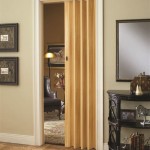Automotive Interior Trim Paint: A Comprehensive Guide
Automotive interior trim paint is a specialized coating formulated for application on the various plastic, vinyl, and sometimes metal components within a vehicle's cabin. This paint is designed not only to alter the aesthetic appearance of these surfaces but also to provide protection against wear, fading, and other environmental factors. The selection and application of automotive interior trim paint require careful consideration to ensure a durable, attractive, and safe finish.
The interior of a vehicle is subjected to a considerable amount of abuse. Sunlight exposure leads to fading and cracking of plastic and vinyl. Constant contact from occupants results in scuffs, scratches, and staining. Cleaning products, while necessary, can also contribute to the degradation of the original finish. Automotive interior trim paint provides a means to restore and protect these surfaces, extending their lifespan and enhancing the overall look of the vehicle's interior.
Understanding the Types of Automotive Interior Trim Paint
Several types of automotive interior trim paint are available on the market, each with its own specific properties and applications. The selection of the appropriate paint depends on the type of material being painted, the desired finish, and the level of durability required. Understanding the differences between these paint types is crucial for achieving optimal results.
Acrylic Lacquer: Acrylic lacquer paints dry quickly and offer a smooth finish. They are relatively easy to apply, making them a popular choice for DIY projects. However, acrylic lacquer is generally less durable than other types of trim paint and may be more susceptible to scratching and fading. It is best suited for areas that experience minimal wear and tear.
Vinyl Dye: Vinyl dye is not technically a paint. Instead, it's a coating that penetrates the surface of vinyl and plastic, changing its color at a molecular level. This results in a finish that is highly resistant to cracking, peeling, and fading. Vinyl dyes are ideal for restoring or changing the color of vinyl seats, dashboards, and door panels. Proper surface preparation is critical for vinyl dye to adhere correctly.
Flexible Automotive Paint: Designed specifically for flexible surfaces such as vinyl and plastic, flexible automotive paint contains additives that allow it to bend and flex without cracking or peeling. This type of paint is often formulated with a primer integrated into the coating, promoting adhesion to the substrate. It offers good durability and is available in a variety of colors and finishes.
Urethane-Based Paint: Urethane-based paints offer superior durability and resistance to abrasion, chemicals, and UV radiation. They are typically more expensive than other types of trim paint, but the increased longevity and resilience make them a worthwhile investment for high-traffic areas or surfaces that are exposed to harsh conditions. Urethane paints often require a two-part mixing process involving a hardener or catalyst.
Water-Based Paint: Water-based paints are gaining popularity due to their low VOC (volatile organic compound) content, making them a more environmentally friendly option. While traditionally less durable than solvent-based paints, advancements in water-based paint technology have resulted in products that offer comparable performance. Water-based trim paints are easy to clean up and generally have a less offensive odor than solvent-based alternatives.
The choice between these paint types hinges on the specific requirements of the project. Factors like the material being painted, the desired finish, the anticipated level of wear, and environmental concerns should all be considered when selecting the appropriate automotive interior trim paint.
Proper Surface Preparation: The Key to a Lasting Finish
Regardless of the type of automotive interior trim paint chosen, proper surface preparation is essential for achieving a durable and attractive finish. A poorly prepared surface will prevent the paint from adhering correctly, leading to peeling, cracking, and other issues. The preparation process involves cleaning, degreasing, and sometimes sanding the surface to create a suitable base for the paint.
Cleaning: Begin by thoroughly cleaning the surface with a dedicated automotive interior cleaner. This removes dirt, dust, grease, and other contaminants that can interfere with paint adhesion. For stubborn stains, use a mild abrasive cleaner, but be careful not to damage the underlying material. Thorough rinsing is crucial to remove any residue from the cleaning products.
Degreasing: Even after cleaning, surfaces may still have residual oils or silicone-based products that can prevent paint from adhering properly. Apply a degreaser specifically designed for automotive interior surfaces to remove these contaminants. Follow the manufacturer's instructions for application and wipe the surface clean with a lint-free cloth.
Sanding: Sanding the surface creates a mechanical bond for the paint to adhere to. Use a fine-grit sandpaper (e.g., 320-400 grit) to lightly scuff the surface. This creates a slightly rough texture that allows the paint to grip. Avoid excessive sanding, as this can damage the underlying material or create an uneven surface. After sanding, thoroughly remove any sanding dust with a tack cloth.
Masking: Proper masking is crucial to protect adjacent surfaces from overspray. Use automotive masking tape and paper to carefully cover any areas that should not be painted. Ensure that the masking tape is securely adhered to the surface to prevent paint from seeping underneath.
Priming (Optional): While not always necessary, applying a primer specifically designed for automotive interior plastics can further improve adhesion and provide a uniform base for the paint. Use a thin, even coat of primer and allow it to dry completely before applying the topcoat.
By following these surface preparation steps, one ensures that the automotive interior trim paint will adhere properly and provide a long-lasting, attractive finish. Skipping or neglecting these steps can result in a substandard outcome that requires rework.
Application Techniques and Best Practices
The application of automotive interior trim paint requires attention to detail and adherence to best practices to achieve professional-looking results. Whether using aerosol cans or spray guns, the technique used can significantly impact the final appearance and durability of the paint job.
Aerosol Can Application: Aerosol cans are a convenient option for small to medium-sized projects. Before use, thoroughly shake the can for at least two minutes to ensure that the paint is properly mixed. Hold the can approximately 8-12 inches from the surface and apply thin, even coats using a sweeping motion. Avoid spraying too much paint in one area, as this can lead to runs and drips. Allow each coat to dry completely before applying the next. Multiple thin coats are preferable to one thick coat.
Spray Gun Application: Spray guns offer greater control over the paint application process and are ideal for larger projects or achieving a professional finish. Adjust the spray gun settings to achieve the desired spray pattern and flow rate. Practice spraying on a test panel before applying the paint to the interior trim. As with aerosol cans, apply thin, even coats using a sweeping motion. Maintain a consistent distance and angle from the surface to ensure uniform coverage. Clean the spray gun thoroughly after each use to prevent clogging and ensure optimal performance for future projects.
Environmental Conditions: The environmental conditions during painting can significantly impact the quality of the finish. Avoid painting in direct sunlight or in excessively humid conditions. The ideal temperature for painting is typically between 65°F and 80°F (18°C and 27°C). Ensure adequate ventilation to remove fumes and prevent the buildup of overspray. If painting indoors, use a respirator to protect oneself from inhaling paint particles.
Curing and Drying: Allow the paint to cure completely before handling or reassembling the interior components. Refer to the manufacturer's instructions for the recommended drying and curing times. Avoid exposing the painted surfaces to extreme temperatures or harsh chemicals during the curing process. A fully cured finish will be more durable and resistant to scratches and fading.
Dealing with Imperfections: Despite careful preparation and application, imperfections may still occur. Runs, drips, and orange peel (a textured finish) can be addressed by lightly sanding the affected areas with fine-grit sandpaper and applying additional coats of paint. Dust or debris that lands on the wet paint can be removed with a small brush or tweezers. Patience and attention to detail are key to achieving a flawless finish.
By following these application techniques and best practices, one can achieve a professional-looking automotive interior trim paint job that enhances the appearance and longevity of the vehicle's interior. Consistent application, proper environmental control, and meticulous attention to detail are essential for a successful outcome.
Automotive interior trim paint offers a cost-effective and versatile solution for restoring and customizing vehicle interiors. By understanding the different types of paint available, prioritizing proper surface preparation, and employing effective application techniques, individuals can achieve professional-quality results that enhance the appearance and value of their vehicles.

Car Trim Paint Can Make All The Difference Colorbond

How To Fix Ling Bmw And Mercedes Interior Trim Colorbond Paint

Diy Painting Interior Trim Pieces Car Paint

How To Paint Interior Trim Pieces

How To Paint Dye Interior Vinyl Plastic Parts Mustang Tech Fox Sn95 S197 Car Nissan 350z

Silver Interior Trim Touch Up Paint Rennlist Porsche Discussion Forums

How To Paint Interior Trim Pieces
Going S On Of Otto Pastimes Painting Chrome Car Interior Trim Toyota Highlander

Don T Just Paint Interior Trim Flock It

How To Paint Plastic With Spray Painting Car Interior Trim








